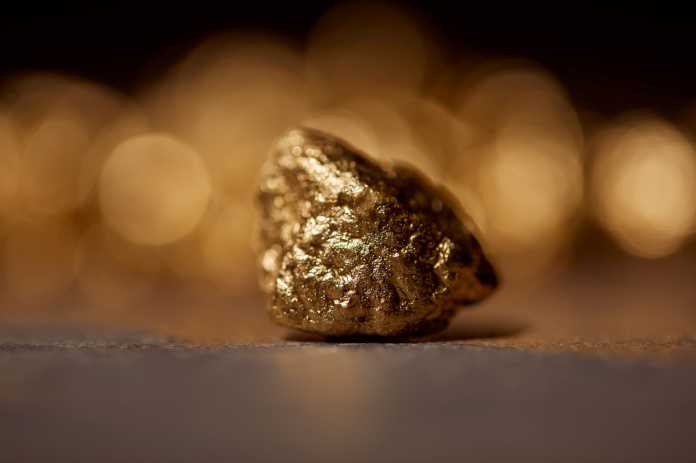In recent years, Barrick Gold stock (NYSE:GOLD) has underperformed relative to gold price (XAUUSD:CUR). It has also underperformed the GDX gold miner ETF in the last year, indicating that the stock is being weighed down by company-specific concerns. It should be emphasized, however, that over the previous five years, it has not underperformed the ETF or the price of gold; in other words, its performance is consistent with the industry as a whole. In my opinion, the current time of underperformance should be viewed as an opportunity to invest on two factors. First and foremost, the company’s long-term prospects appear to be improving. Second, the current global economic and geopolitical tendencies may cause another large leg higher in gold prices, which should greatly improve the prospects of most gold mining businesses.
Rising prices are weighing on Barrick’s results, but the company’s debt status remains stable.
Barrick’s net income for the first quarter of the year was $120 million, a considerable decrease from $438 million in the same time last year. It was, nevertheless, a significant improvement over the net loss of $735 million recorded in the fourth quarter of last year. Revenues were also down roughly 7% year on year.
As we can see, both gold and copper production have fallen dramatically, which has contributed significantly to the revenue decline. The cost of gold sales has risen fast, by almost 20% since the same quarter last year, despite a 4% reduction in gold production. This explains a large portion of the drop in profits.
Other noteworthy measures include Barrick’s debt status, which is always something that investors must keep a close eye on given the unpredictable nature of the mining industry.
As we can see, there has been a big improvement in this area, which should be seen as a sign that the company is financially stable. In the unlikely event that gold prices continue to fall, Barrick is financially positioned to weather the storm and wait for better times, which means that investors, too, may ride it out if necessary and are ready to do so.
The reserve status is stable, and long-term output is expected to increase dramatically.
Long-term investors ready to ride out any future market downturns will find solace in the fact that Barrick expects much higher production levels by the end of this decade. It is primarily supported by its Pakistan project.
Underpinning output is a healthy reserve basis, which is why I believe this stock has long-term potential.
With an annual production rate of roughly 5.5 million ounces in the short and medium term, its current gold reserve life is about 13-14 years. Within the context of worldwide gold reserves of around 52,000 metric tons and output of approximately 3,100 tons, which gives the global gold mining industry a reserve life of approximately 16-17 years, Barrick’s reserve ratio is adequate. We should keep in mind that some of the enterprises with large reserve life ratios are either state actors or Russian and other foreign companies that we cannot invest in. Some reserves are by-product reserves, which means they are linked to other mineral mining, such as copper, and have a longer reserve life than most gold-focused operations. Taking these considerations into account, I believe Barrick has a good reserves-to-production ratio.
My long-term forecast for gold prices is dominated by recent central bank purchases, as well as a seemingly global trend of de-dollarization.
While company-specific KPIs are certainly crucial for all mining companies, the prognosis for often price-volatile commodity prices is equally important. It goes without saying that predicting commodity prices is difficult, with a large margin of error. There are simply too many variables, and the trends and directions within those variables are unpredictable. The most we can do is try to figure out which variables are most important right now and where they might be headed.
The net buying of actual gold by central banks is the most important variable I am now watching in the gold market.
Central banks around the world are currently net buyers of gold, purchasing over 40% of all mined gold entering the market. If the current trend continues, the gold market will have a stable price floor, but it is more likely that the price will rise further in fiat currency terms.
Concerning the question of why central banks are so keen to collect gold, I believe the most logical response is that they anticipate more risk to the global fiat system. Personally, I believe they are correct. For example, Zoltan Pozsar of Credit Swiss believes that the current financial age is coming to an end, giving way to a new one dominated by commodities-based currencies. Perhaps the proposed Russian-Iranian joint gold-backed stablecoin effort to facilitate bilateral trade will serve as a model for what a future commodities-based money system would look like. Or it could take in different shapes.
Despite assurances that the USD-dominated global financial system would remain in place, we saw a number of countries, such as India, push hard to establish bilateral deals in order to establish the use of local currencies in bilateral trade rather than using the USD or the euro as an intermediary. Countries that have been heavily sanctioned, such as Russia, are attempting to reduce their reliance on the USD or the euro in their trade with the rest of the world.
All of these factors have contributed to the USD’s slide as a worldwide reserve currency, which fell by 8% last year. The majority of arguments against the USD losing its dominant role as a global reserve currency emphasize that no other fiat currency comes close to challenging the dollar. Current tendencies of central banks throughout the world stockpiling gold may indicate that other fiat currencies are not necessarily the greatest danger to the USD’s FX dominance.
The likelihood of the end of an era in terms of global financial domination is the most plausible cause of the apparent increase in central bank gold demand. It’s possible that this will spiral out of control. As central banks acquire more gold, it is vital that they find practical methods to use the gold, either as a collateral backstop for existing fiat currencies or by introducing stablecoins backed by gold. In theory, the development of such alternatives to the US dollar will displace the use of the US dollar, as well as potentially the euro and other large fiat reserve currencies backed by nothing. As a result of their decline, there will be an increase in demand for the rising alternative commodities-based currencies in their many forms, as a rush to jump ship may occur at some point. As a result of increased demand for gold, prices should rise from current levels, at least when evaluated in unbacked fiat currency terms.
The Future Bodes Well for Barrick Gold Stock
Even while Barrick Gold stock has underperformed the GDX ETF and gold prices in the last year, when looking at its five-year record, it has done slightly better than both. Looking ahead, I see no reason why it cannot replicate the same performance in the next five years, especially when compared to current levels. that has the reserves to make that happen, and production is expected to expand dramatically if its Pakistan project goes well. All of this takes place in the backdrop of what I consider to be a good market situation for gold prices.
A word about Barrick’s chances of becoming a big copper producer as a result of its Pakistan project, and what that would mean for the company’s future prospects. As I mentioned in a recent piece, the Reko Diq project in Pakistan has the potential to significantly boost Barrick’s copper reserves and output, in addition to the gold deposits that come with it. In terms of Barrick’s long-term prospects, I consider the copper price forecast to be a bit of a wildcard. Given regional political and geopolitical difficulties, the Pakistan project is also a bit of a wildcard. This project raises Barrick’s overall risk profile while also providing it with a reasonable production growth profile, making it an appealing long-term investment prospect. If both gold and copper prices rise in the next months, and Barrick’s Pakistan project goes smoothly, the company might become a top-performing stock this decade, following a relatively sluggish and probably disappointing start.
Featured Image: DepositPhotos © AntonMatyukha















